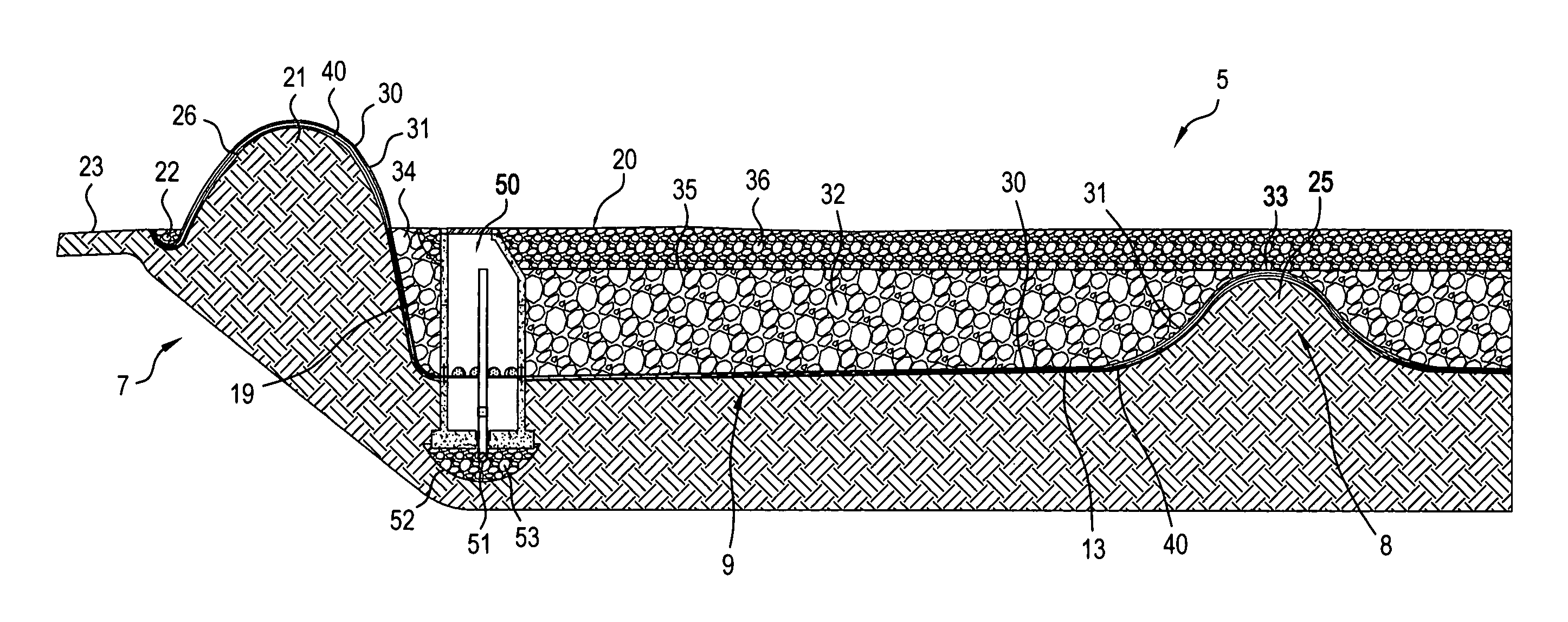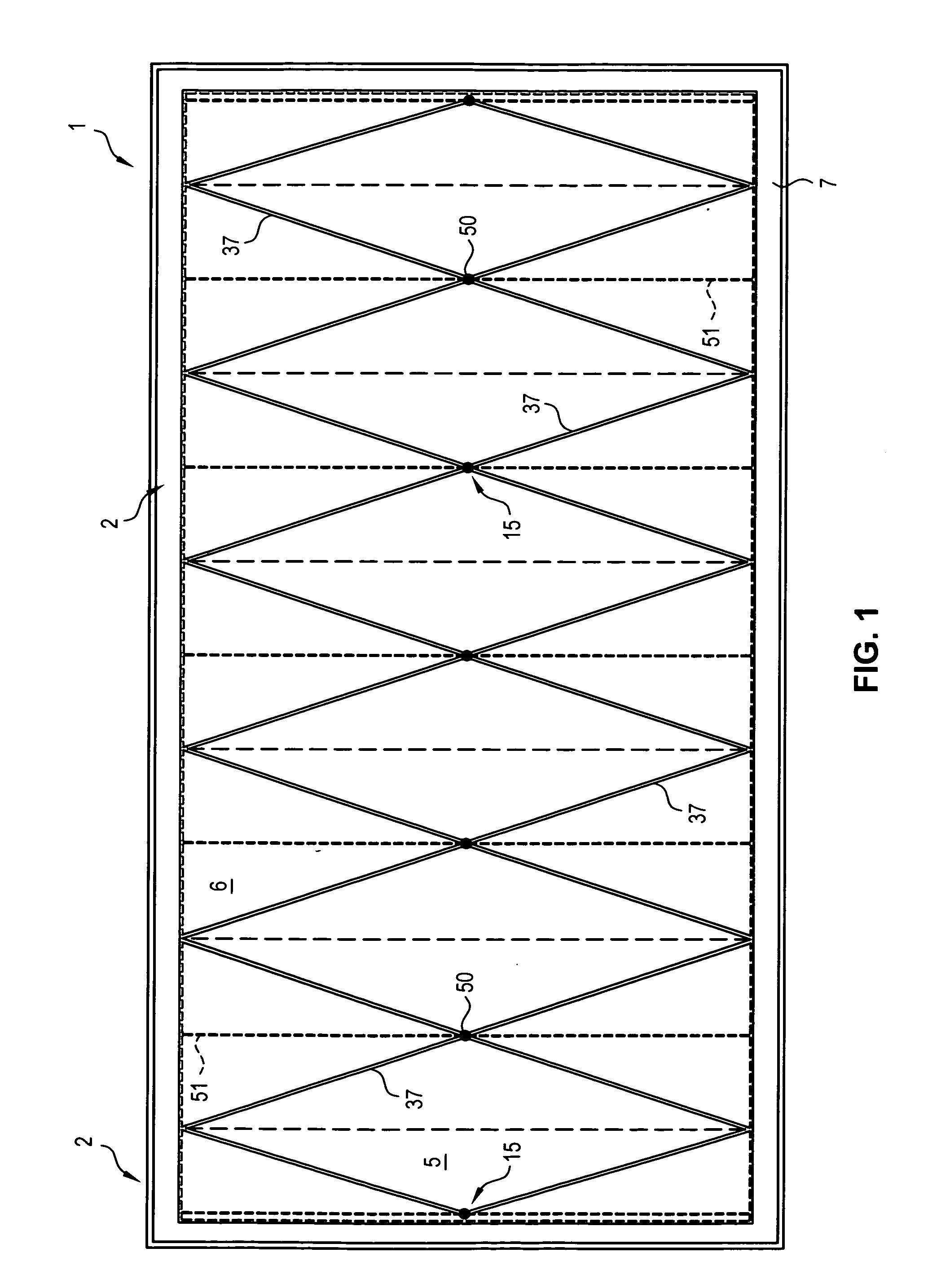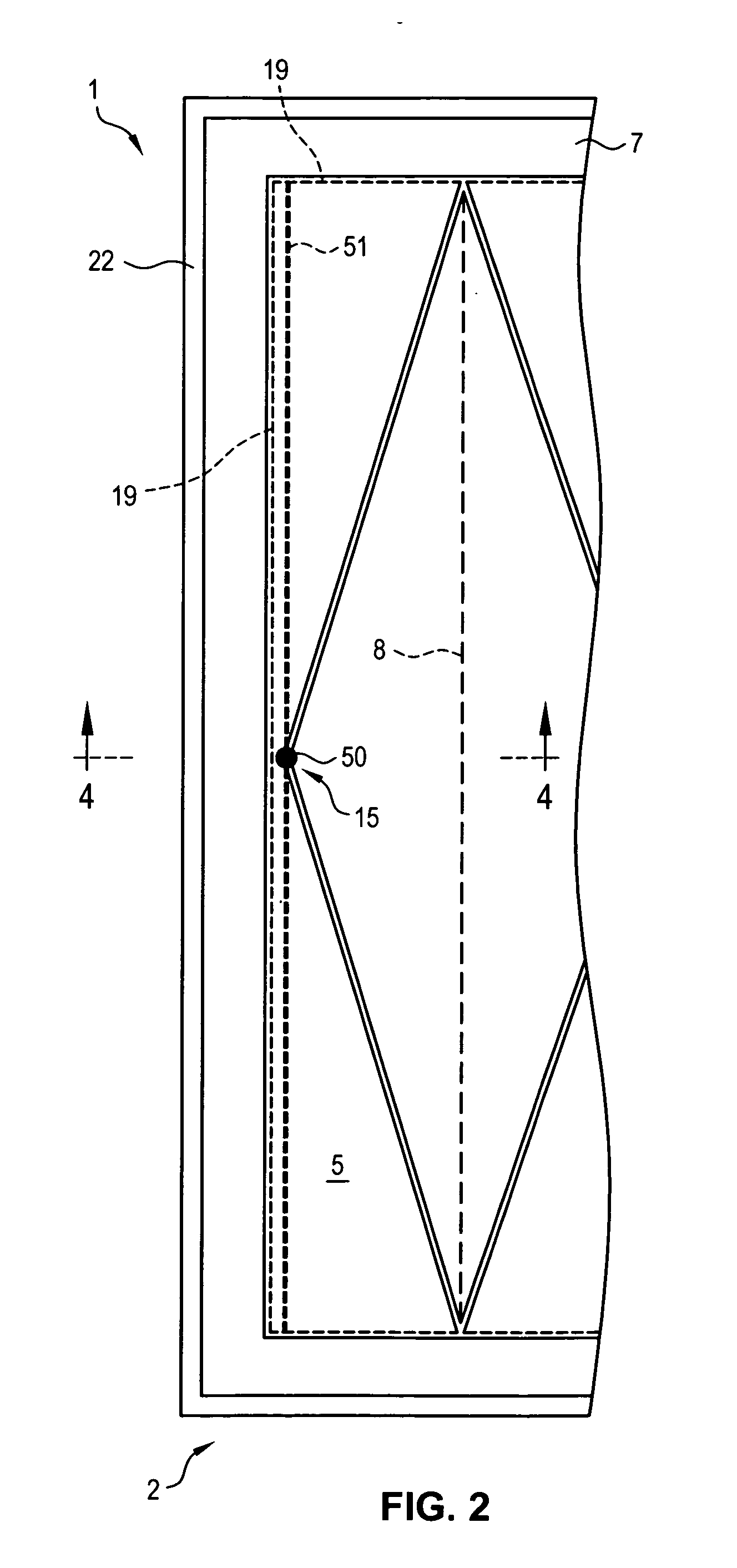Fluid containment and management system
a technology of management system and flue gas, which is applied in the direction of transportation and packaging, mechanical equipment, mining structures, etc., can solve the problems of inconvenient installation, and inability to meet the requirements of the application
- Summary
- Abstract
- Description
- Claims
- Application Information
AI Technical Summary
Benefits of technology
Problems solved by technology
Method used
Image
Examples
Embodiment Construction
[0042]FIG. 1 illustrates a site incorporating the fluid containment and management system of the present invention. In the illustrated example, the site is a well pad 1 which is typically used for the extraction of natural gas from shale using a “pressurized fracturing” process, which is commonly referred to as “fracking”. It is to be understood, however, that the illustrated well pad 1 is only one example of any of a number of implementations that can make use of the fluid containment and management system of the present invention. For example, the illustrated well pad 1 is generally rectangular, having an area on the order of 180,000 square feet, which is typical for a fracking operation. Nevertheless, both the shape and the size of the well pad 1 can be varied to suit a particular application, location or operating environment, as desired. Variations are also possible to accommodate use of the well pad 1 for other types of drilling operations, in any of a variety of fields other ...
PUM
 Login to View More
Login to View More Abstract
Description
Claims
Application Information
 Login to View More
Login to View More - R&D
- Intellectual Property
- Life Sciences
- Materials
- Tech Scout
- Unparalleled Data Quality
- Higher Quality Content
- 60% Fewer Hallucinations
Browse by: Latest US Patents, China's latest patents, Technical Efficacy Thesaurus, Application Domain, Technology Topic, Popular Technical Reports.
© 2025 PatSnap. All rights reserved.Legal|Privacy policy|Modern Slavery Act Transparency Statement|Sitemap|About US| Contact US: help@patsnap.com



